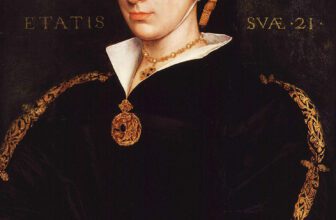
The Disappearance and Suspected Murder Of Princes in the Tower
What Actually Happened to the Princes in the Tower?
The story of the Princes in the Tower is one of the most enduring and haunting mysteries in English history. It is a tale woven from political ambition, royal betrayal, and unanswered questions that have captivated historians and the public for over five centuries. The two young princes, Edward V and his brother Richard of Shrewsbury, Duke of York, disappeared without a trace in 1483 after being lodged in the Tower of London. Their fate remains unknown, shrouded in conspiracy theories, rumors, and occasional glimmers of evidence.
The Princes and Their Royal Lineage
Edward V was the eldest son of King Edward IV and Elizabeth Woodville. Born in 1470, he was just 12 years old when his father died unexpectedly in April 1483. His younger brother, Richard of Shrewsbury, was born in 1473, making him only 9 years old at the time of their disappearance. As sons of the king, they were of royal blood and were next in line to the throne. Their legitimacy was not questioned until political maneuvering began to unfold shortly after Edward IV’s death.
Who Were Their Parents?
Edward IV, a towering and charismatic figure, was a Yorkist king who had fought his way to the throne during the Wars of the Roses. His queen, Elizabeth Woodville, was a commoner and a widow, making their marriage controversial. However, their union produced several children, including Edward V and Richard, making them the rightful heirs under the Yorkist succession.
The Rise of Richard, Duke of Gloucester
Upon Edward IV’s death, his brother Richard, Duke of Gloucester, was named Lord Protector for the young Edward V. Initially, Richard seemed to support his nephew’s ascension. But in a sudden turn of events, he intercepted Edward V on his journey to London, placed him in the Tower of London “for his safety,” and arrested key supporters of the Woodville faction.
Shortly afterward, Parliament declared Edward IV’s marriage invalid due to a supposed pre-contract with another woman, making all his children illegitimate. With this act, Edward V and his siblings were declared bastards, removing their claim to the throne. Richard then ascended the throne as King Richard III in June 1483.
Who Locked the Princes in the Tower?
It was Richard III who ordered the young princes to be lodged in the Tower of London. At the time, the Tower was not only a prison but also a royal residence. Initially, it was said that the boys were seen playing within the grounds, but by late summer of 1483, they had vanished from public view. No official record or explanation was given regarding their disappearance.
Were the Princes Bastards?
The claim that Edward V and Richard were illegitimate was a key justification for Richard III’s rise to power. The supposed pre-contract between Edward IV and Lady Eleanor Butler was presented by Bishop Robert Stillington. This claim, though legally dubious and hotly debated by historians, was enough for Parliament to pass the Titulus Regius, declaring Edward IV’s children illegitimate.
However, most modern historians regard this as a politically convenient fabrication. The validity of the pre-contract is uncertain, and it conveniently emerged only after Edward IV’s death. As such, many consider Edward V and Richard to have been legitimate heirs.
The Disappearance and Suspected Murder
By the end of 1483, the princes had disappeared entirely from public view. Rumors soon spread that they had been murdered, and suspicion naturally fell upon Richard III. The most widely accepted theory is that they were killed to secure Richard’s claim to the throne and eliminate any rival claimants.
However, other theories abound. Some argue that Henry Stafford, Duke of Buckingham, may have acted independently or with Richard’s approval. Others suggest that Henry VII, who defeated Richard at the Battle of Bosworth in 1485 and married Edward V’s sister, Elizabeth of York, may have ordered their deaths later to eliminate rival claimants and strengthen his own tenuous claim.
How Old Were the Princes in the Tower When They Died?
If the princes were indeed murdered in 1483, Edward V would have been 12 years old, and Richard of Shrewsbury just 9. Their youth and innocence have only magnified the tragedy of their mysterious fate and contributed to the public’s enduring fascination with their story.
While most historians agree that the princes were likely murdered, there have been persistent rumors that one or both survived. The most famous of these involves Perkin Warbeck, who claimed to be Richard, Duke of York, during the reign of Henry VII. Warbeck gained considerable support in Europe and even invaded England before being captured and executed. However, most believe Warbeck was an imposter, although the very plausibility of his claim speaks to the lingering uncertainty around the princes’ fate.
Some accounts also suggest that the princes may have been secretly smuggled out of the Tower and lived in obscurity. These theories, while romantic, lack convincing evidence. No credible contemporary reports confirm the survival of either boy.
The Bones in Westminster Abbey
In 1674, workers at the Tower of London uncovered a wooden box containing the skeletons of two young boys buried beneath a staircase. King Charles II ordered that the remains be interred in Westminster Abbey in an urn bearing the names of Edward V and Richard. In 1933, the bones were examined and found to be consistent with boys of their ages, though the evidence was inconclusive.
There have been calls to re-examine the bones using modern forensic techniques, including DNA analysis, but these have been repeatedly denied out of respect for the dead and concerns about disturbing royal remains.
What Is the Curse of the Princes in the Tower?
Some believe that the mysterious and tragic fate of the princes has cast a long curse over the English monarchy. Richard III’s reputation was irrevocably damaged, and his reign lasted just two years before he was killed at the Battle of Bosworth. His defeat marked the end of the Plantagenet dynasty and the beginning of the Tudor era.
The supposed curse has become a metaphor for the downfall of those who achieve power through betrayal and bloodshed. It also represents the enduring power of unresolved mysteries to haunt the historical imagination.
The Legacy of the Princes in the Tower
Whether murdered, spirited away, or victims of political propaganda, the princes’ story remains one of history’s greatest enigmas. Richard III remains a controversial figure: some see him as a power-hungry usurper, others as a misunderstood ruler maligned by Tudor historians like Thomas More and Shakespeare.
In recent years, interest in Richard III has surged, especially following the discovery of his remains in a Leicester parking lot in 2012. Efforts to rehabilitate his image have reignited debates over the fate of the princes.
A Mystery That Endures
Despite centuries of speculation, the true fate of Edward V and Richard of Shrewsbury may never be known. Theories abound, but no definitive evidence has surfaced to confirm what happened in the darkened corridors of the Tower of London.
Perhaps the greatest tragedy is not just the possible murder of two innocent boys, but the political manipulation and ambition that led to their demise. Their story continues to symbolize the vulnerability of innocence in the face of power and the way history can be shaped by those who wield it.
Until new evidence emerges, the Princes in the Tower remain spectral figures of a troubled time, a cautionary tale of ambition, betrayal, and the unanswered questions that history sometimes refuses to resolve.




